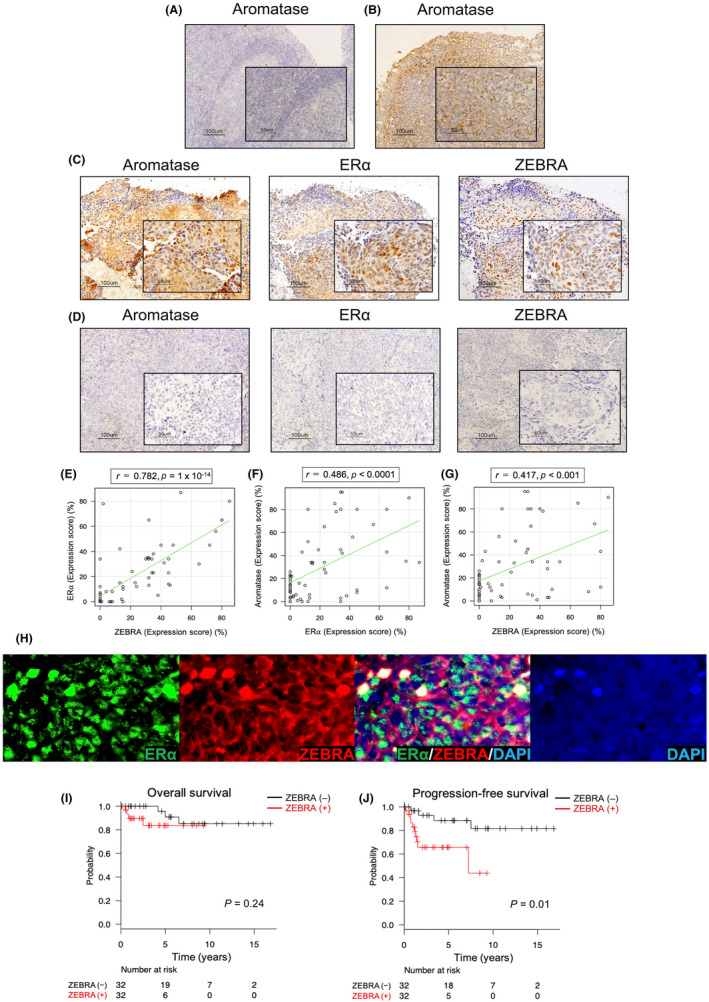FIGURE 1.

(A–D) Immunostaining of aromatase, estrogen receptor α (ERα), and ZEBRA in normal tonsils and nasopharyngeal carcinoma (NPC) samples. (magnification ×100, scale bar shows 100 μm; lower right rectangle ×400, scale bar shows 50 μm). (A, B) Representative examples of aromatase staining of normal palatine and pharyngeal tonsils. (A) Normal palatine tonsil is negative, and normal (B) pharyngeal tonsil is positive for the expression of aromatase. (C) Positive immunostaining for aromatase, ERα, and ZEBRA in NPC is obtained from the same patient, and (D) negative immunostaining from the other patient. (E) Correlation between the expression levels of ZEBRA and ERα in NPC. The expression scores of ZEBRA and ERα for 64 cases are plotted. Spearman correlation coefficient indicates that the expression of ZEBRA demonstrates a significant correlation with that of ERα (r = 0.782, p = 1 × 10−14). (F) Correlation between the expression levels of ERα and aromatase in NPC (r = 0.486, p < 0.0001). (G) Correlation between the expression levels of ZEBRA and aromatase in NPC (r = 0.417, p < 0.001). (H) Dual fluorescence immunostaining of ERα, ZEBRA, and DAPI in NPC tissue samples. A merged image of ERα and ZEBRA indicates co‐expression of ERα and ZEBRA. Original magnifications: ×400. Kaplan–Meier estimates of overall survival (I) and progression‐free survival (J) according to the ZEBRA status of 64 patients with NPC in the immunohistochemical study
